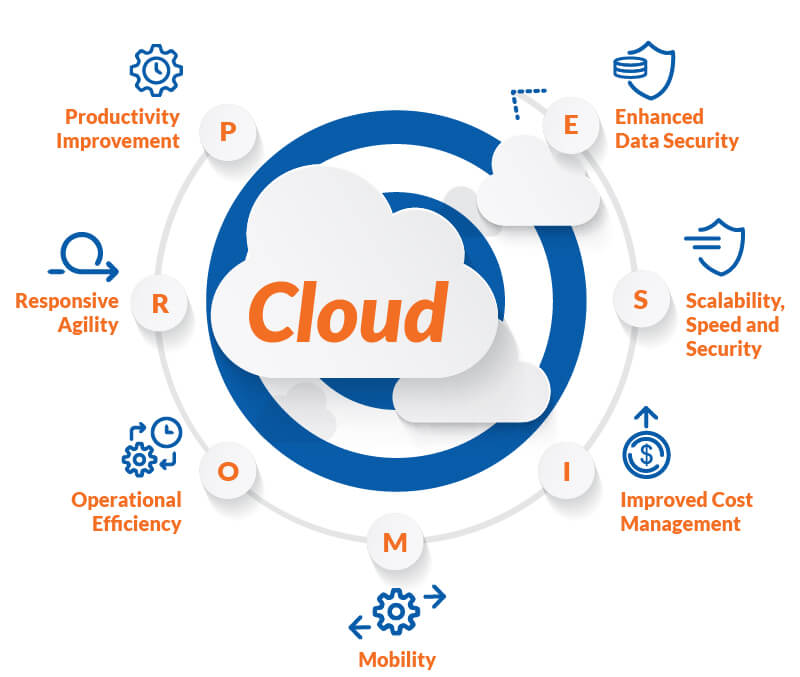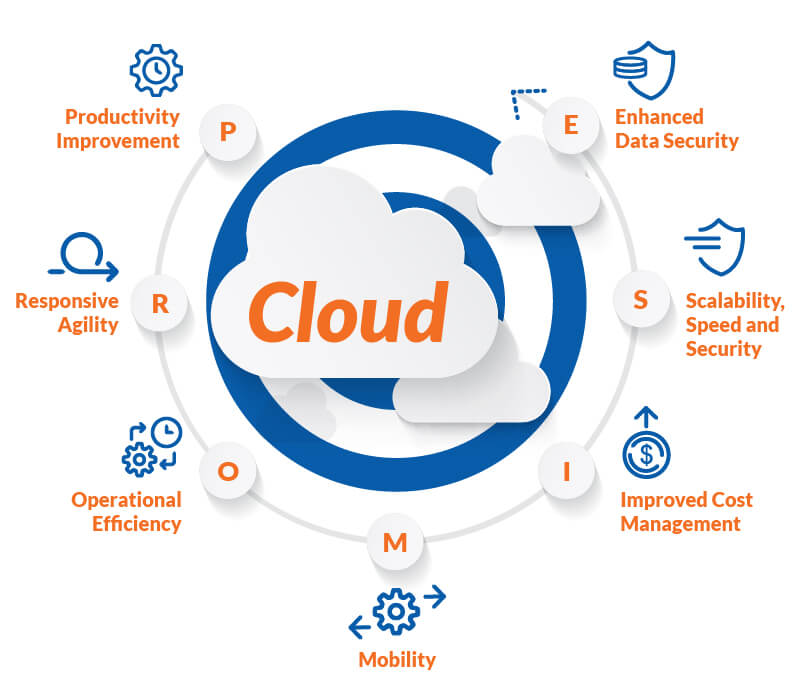
Moving data, applications, or other business components from an on-premises or conventional computing environment to the cloud is referred to as cloud migration. The benefits and challenges of cloud migration will be addressed in this blog.
Benefits of cloud migration
- Increased Flexibility
A major advantage of moving to the cloud is improved flexibility. Businesses can scale their resources up or down as necessary with cloud computing, enabling them to react rapidly to changes in demand. The ability to access cloud resources from any location in the world also allows firms to expand their operations into new markets.
- Reduced Costs
Less expensive cloud migration is another advantage. Businesses can reduce infrastructure expenses by using cloud computing because they only have to pay for the services they really utilise. Additionally, pay-as-you-go cloud services are frequently available, which can save organisations money on IT expenses.
- Improved Security
Moving to the cloud can enhance security as well. Businesses that use conventional on-premises data centres are in charge of protecting their own data and making sure that their systems adhere to legal requirements. However, when companies move to the cloud, they can benefit from the security tools and regulatory oversight offered by their cloud provider.
- Increased Collaboration
Collaboration may improve as a result of cloud migration. Employees can collaborate on projects from any location using cloud-based tools and applications. Additionally, real-time editing and commenting capabilities, which are frequently included in cloud-based collaboration applications, can increase team productivity.
- Better Disaster Recovery
The enhanced disaster recovery provided by cloud migration is another advantage. Businesses often have to make their own backup and disaster recovery investments when using on-premises data centres. Nevertheless, when companies go to the cloud, they can benefit from the disaster recovery features that are offered by their cloud provider.
Challenges of Cloud Migration
- Lack of Governance
Lack of governance is one of the main obstacles to cloud migration. It can be challenging to control who gets access to what data and how it is used without sound governance in place. Future security and compliance issues may result from this.
- Inadequate Planning
Inadequate planning is another typical issue. Many businesses attempt to migrate to the cloud without first performing an in-depth analysis of their needs and goals. This may result in issues like data loss or unforeseen costs.
- Lack of Expertise
Lack of experience is a problem that firms encounter when converting to the cloud. Many businesses lack the internal tools or expertise required to correctly move their data and apps to the cloud. This can cause the migration process to stall or go wrong.
- Complexity
It might be challenging to successfully migrate data and apps to the cloud due to its complexity. Many businesses underestimate the time and effort necessary for a successful cloud migration. Frustration and failure may result from this.
- Security Concern
The security of moving data and apps to the cloud is a constant concern. Organizations are required to make sure that their data is secure both when it is in transit and when it is at rest in the cloud.
Conclusion
Cloud technology will continue to be a major force behind new business models in 2023 due to its agility, security, and availability. With confidence, it allows firms the ability to swiftly respond to market inflation or recession and alter client demands.




